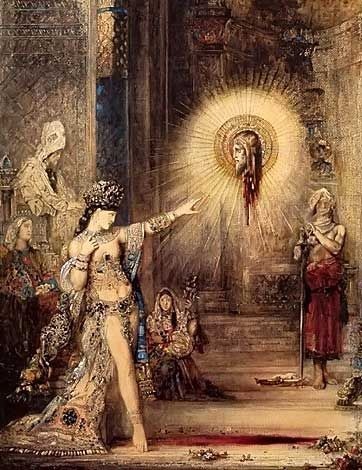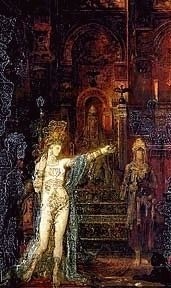| GUSTAVE MOREAU | |
Gustave Moreau Gallery of Royalty Free Images Art Works in High Resolution. Choose image for the largest size, then right click to save or print. Always Royalty Free |
In most of his work a complete absence of motion has, says Richard Muther, "taken the place of the striding legs, the attitudes of the fencing master, the arms everlastingly raised to heaven, and the passionately distorted faces which had reigned in French painting since David. He makes spiritual expression his starting point, and not scenic effect. Everything bears the seal of supernatural peace and everything is inspired by inward life and suppressed passion." Before the discovery of the famous Cyprus statues no artist would have ventured to adorn a Grecian goddess with flowers, hairpins and a heavy tiara. Attracted to these discoveries, Moreau has been governed by strangely exotic inspirations. He is said to have worked in his studio "as in a tower opulent with ivory and jewels." He delights in arraying his figures in the most costly materials, as the Cyprus discoveries give him warrant for doing, in painting their robes in the deepest hues, and lavishly adorning their arms and breasts. The capricious generation of the Renaissance occasionally treated classical subjects in this manner, but there is the same difference between Filippino Lippi and Gustave Moreau as there is between Botticelli and Burne-Jones, the former, like Shakespeare in the Midsummer Night's Dream, transformed the antique into a blithe and fantastic world, whereas the fire of yearning romance burns in the pictures of Moreau." His "Orpheus" is one of his most characteristic and strangely attractive creations, just as those dealing with Salome, in their bizarre sentiment – suggestive of an opium dream – are perhaps his most imaginative. When Moreau died in 1898, he left his eight thousand pictures in watercolor and in oil to his native city of Paris to form the Musee Moreau in the Rue de la Rochefoucauld. The most notable of his paintings are "Jason", "Death of the Young Man", "Prometheus", "Hesiod and the Muses", "The Sphinx", and "The Vision of Salome" in the Luxembourg. From 1892 to 1898 he was professor in the Ecole des Beaux-Arts. At the age of forty-nine he received the Cross of the Legion of Honor. Navigation and Searching – Terms of Use – Contact Us |

